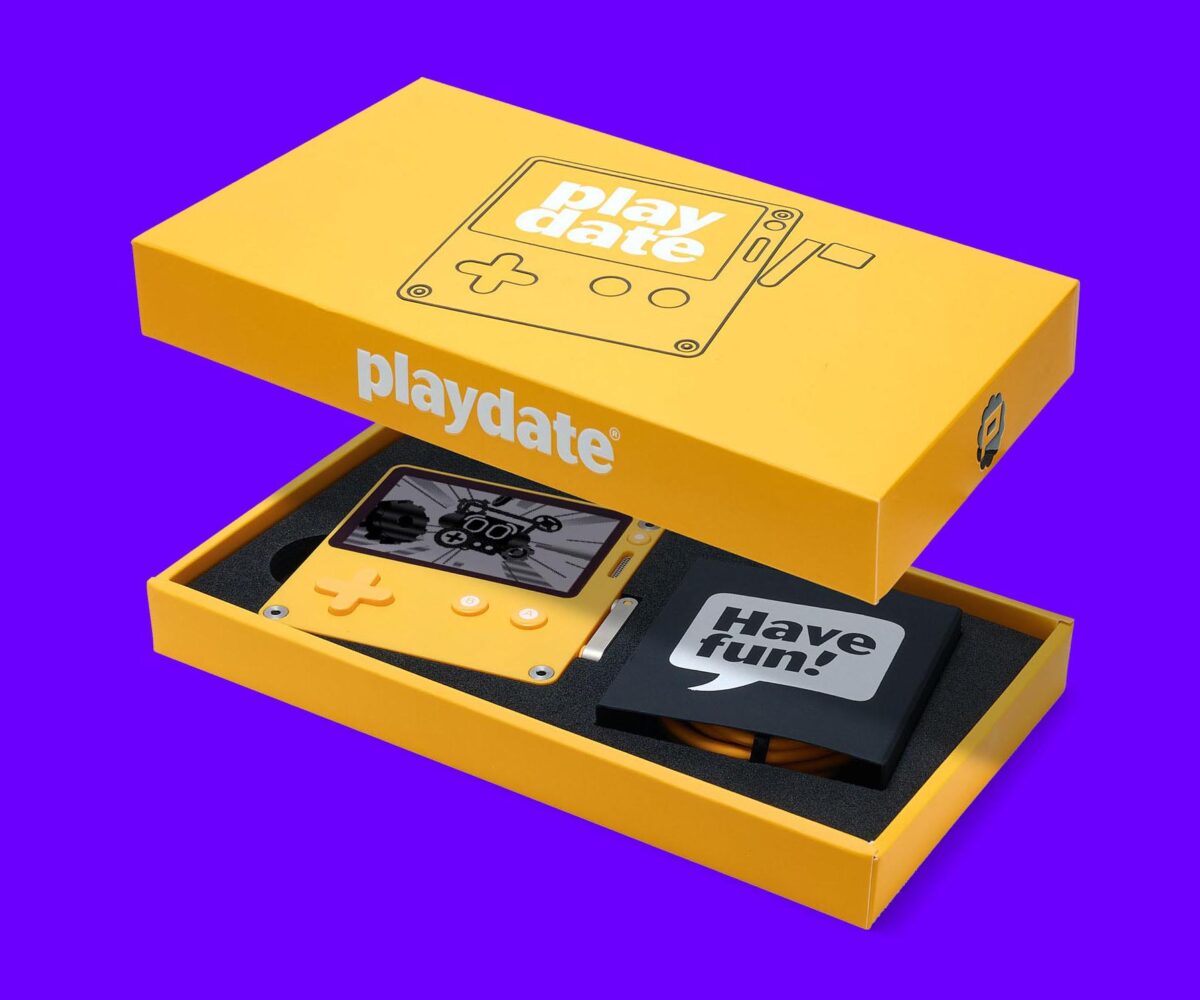Earlier today I spoke with Ryan C. Gordon, the internet’s #1 icculus, to get his opinions on Valve’s new seemingly anti-native Linux gaming stance. The long and the short of it is that Gordon is seeing the bright side. If the Steam Deck is successful, it will give thousands of people playing games their first desktop Linux experience and they might become the argument for native ports once that platform takes off.
True, too, is that the option to plug in a keyboard, a mouse, and a monitor, using a USB-C dock, and start using Linux. That could be many people’s first experience with Linux on the desktop. It could be good if Valve does a good job with SteamOS 3.0.
However, I remained incredibly skeptical that this is necessarily going to end up going well for Linux users. Valve has not only stated explicitly that game developers do not need native ports, but according to developer Ethan “flibitijibibo” Lee, Valve may also be reaching out to developers and asking them to use Proton instead of native ports:
Lee is perhaps the person with the second longest career bringing games to Linux and working on gaming technologies that make that easier. Lee’s FNA utilities have enabled at least 83 games to be ported away from Microsoft’s deprecated XNA SDK to the more modern FNA SDK and then onto platforms like the Nintendo Switch, Linux, modern versions of macOS and Windows, Xbox One, iOS, tvOS, and Google’s Stadia.
Here is my conversation with Lee, which occurred over email. Names and my questions are in bold. The only edits I’ve made to Lee’s responses are to italicize product names as well as to italicize whenever Lee used underscores to indicate italics.
Jack Slater: How do you feel about the Windows API Compatability Layers like WINE and Valve’s fork using Proton?
Ethan Lee: It’s an essential preservation project, one that I actually worked on for about a year! It helps get access to dead Windows games which I think is really important, just as it has been for FNA and equally-dead XNA games.
Slater: What kind of experience do you think people will have playing games on the Steam Deck using Valve’s Proton?
Lee: The same as those on Linux, honestly – I don’t suspect the experience will magically be any different than what we see on the issue tracker, which is huge and has tons of loose ends and titles yet to be investigated (big surprise, there’s only 20,000 of them and this only covers ~10% of them):
https://github.com/ValveSoftware/Proton/issues
Slater: You have said that Valve is reaching out to game developers and asking them to consider switching from native Linux ports of games to Proton’s compatibility layer, do you know or could you speculate as to why they’re doing this instead of encouraging native ports?
Lee: To be clear: The issue is primarily situations where developers have historically shipped native, and may not have shipped their next title as native yet. This is common, as much of my portfolio will show. I suspect there’s a disconnect here where only one title is examined without looking deeper into it, and so an unintentional partnership comes out of it. The one that seemed to get mixed in with this is, from what my partners have told me, is an e-mail sent to those requesting kits that, much like the developer documentation, prominently features Proton and makes no mention of why you want to care about native. This is probably a case of just not thinking about the wording and the communication, or worse, not thinking about the consequences of obscuring the information until it’s too late.
I don’t know if there is any intent to erase native games on purpose, but consider that the only reason I’m aware of these communications is specifically because of my partners, whom I make Linux games for.
Slater: Do you know if Valve is offering any incentives in return for developers who are willing to switch their games from native Linux to Proton?
Lee: I mean, do they really have to? That’s the beauty of a loss leader, just sink money into it and undercut everyone else to get what you want.
Slater: How will this change your plans for Linux game ports going forward?
Lee: I have my remaining contractual obligations, but short of a complete 180 from Valve that is very very loud I have to walk away and go do other things for a living. A course correction is unlikely, as they seem abnormally confident that developers will just magically come to me after the device’s inevitable success, which is basically asking me to just casually accept that I’m going to endure even bigger losses than I already have with an empty promise that my business will turn around based on a third party’s big risk that they think anyone can endure. It feels very like much I built my own casket having worked on Proton, and as they’re shoveling dirt onto me they’re going “don’t worry, you’ll be fine when someone else finds you!”
Slater: Will this change your FNA development plans?
Lee: I’m currently talking to the other maintainers about transfer of administration roles. I suspect things will change a little since I was super involved in day-to-day maintenance even when I stepped away from working on FNA all the time a couple years ago, but I trust that they’ll do a good job even long after I’ve stopped programming.
Slater: Even Valve’s website for the Steam Deck says “no porting necessary.” What could Valve do to repair this situation with people who handle porting games to Linux?
Lee: So in my most recent conversation with Valve I mentioned 2 things:
1. The developer docs absolutely need to include native somewhere. If your plan is to migrate to native you can’t hide this stuff forever, if you try it’s going to feel like a bait-and-switch and developers will just walk away the second you start to ask for the investment that you repeatedly insisted was not necessary to begin with.
2. If you’re going to intentionally tank businesses who work on native, the least you could do is subsidize work on stuff that native specifically cares about. I and every other specialist could name a million things that would fit this bill, just in the last week the FNA team has been talking about Wayland support, which includes drafting numerous new EGL extensions and Wayland protocols, and other things like Linux high-resolution timer precision, which we’ve discovered is actually a big pain in the ass to track vs. Windows where you can just set the timer resolution and know that your sleeps will be at a certain level of precision. These are tough problems that need people looking at them, and native cares about this stuff! Instead the money’s just getting dumped into crap like the Synchronization Primitive of the Month that basically nobody making production-quality software can ship.
Slater: Early rumored reservation numbers for the Steam Deck seem to be going well for Valve with the figures for the larger NVMe storage tiers. Do you have anything else you’d like to say to people considering a reservation or who are on the fence about keeping their reservation?
Lee: Buy it if you want, lord knows this interview’s not going to stop you, just don’t be surprised if the AAA and “indie” businesses produce the most cynical outcome imaginable if the operating system is what makes the device interesting to you. Were Valve’s attitude different I probably would have ordered one, knowing that incoming business would allow me to do so. But that business isn’t coming, so I can’t and won’t.
Slater: Is there anything else you’d like to discuss that we haven’t yet?
Lee: I guess follow https://music.flibitijibibo.com/ if it turns out I still know how to be a music producer?
Slater: John Carpenter has so many incredible movies. They Live, The Thing, Big Trouble in Little China, and Escape from New York & L.A just to name a few. Which is your favorite and do you feel like The Thing made it’s way to Washington and has taken over Valve?
Lee: It’s between The Thing and Halloween – though I guess I like Halloween mostly based on Carpenter’s attitude toward scoring and soundtracks, which up until watching and researching it I hadn’t thought of scoring the way he does.
Tell you what, if you (yes you, the reader!) read this and hated me for it, I’m actually the Thing and the real me died a long time ago. That’ll preserve my reputation, right?
Before Valve brought a native Steam client to Linux, the only games Linux users had were from a very small cottage industry coming from indies who developed for Linux and developers like Ryan Gordon and Ethan Lee. When the other writers at LinuxGames.com and I heard rumors about Steam coming to Linux, we were incredibly happy for that news and then it finally happened. Linux gaming was back, and 2014’s Steam Dev Days launch with Steam Machines and SteamOS truly seemed like a moment where Valve was championing the native port.
Then SteamOS & Steam Machines floundered, and now here we are again with the Steam Deck except this time Valve has changed the focus to their Proton Windows compatibility layer. Although we had hints in 2018 never would I have expected Valve to potentially end native Linux gaming along with the careers of prolific developers like Ethan “flibitijibibo” Lee.
I am very disappointed to learn that the long and incredibly successful career of a fantastic developer who has been responsible for so many games coming to Linux and other platforms may be over due to Valve’s takeover of this corner of game and platform development suddenly discarding native games for Linux with the launch of the Steam Deck. I wish Lee well whichever way this turns out, but I suspect that once Valve has made up their mind about the path for Linux development this is just how it will be.
Valve’s profit motive may have both been the reason for the resurgence and, depending on your perspective, now the death of native Linux gaming.
I have reached out to Valve for comment and will update this post if I hear back from them. If other news surfaces regarding native games on Linux, it will get posted here.
If you’re a developer who wants to speak about the issue of native ports on Linux, or a Valve employee who wants to speak on or off the record, please get in touch.



